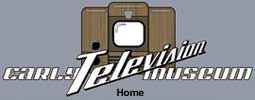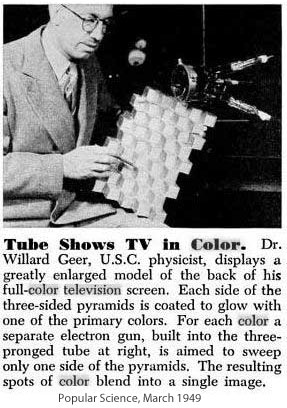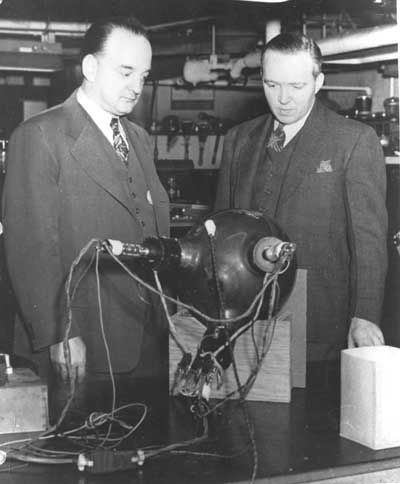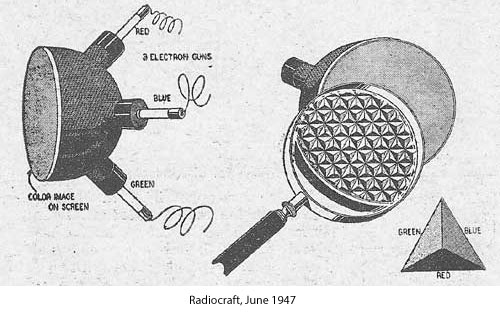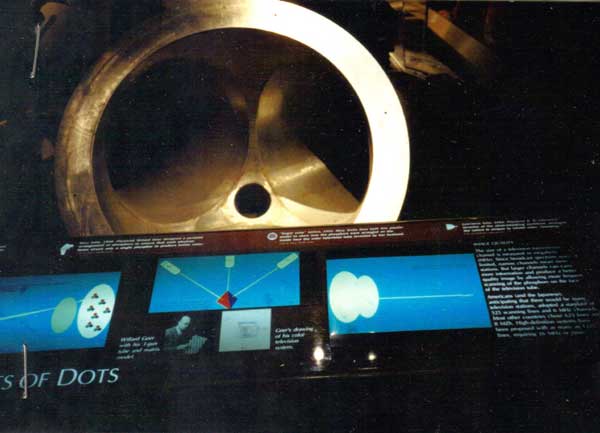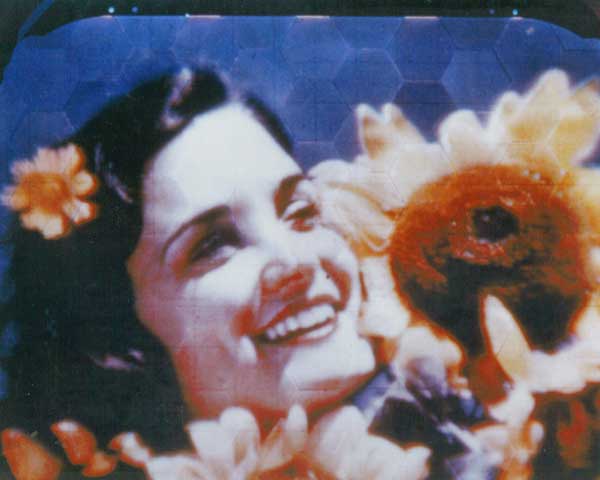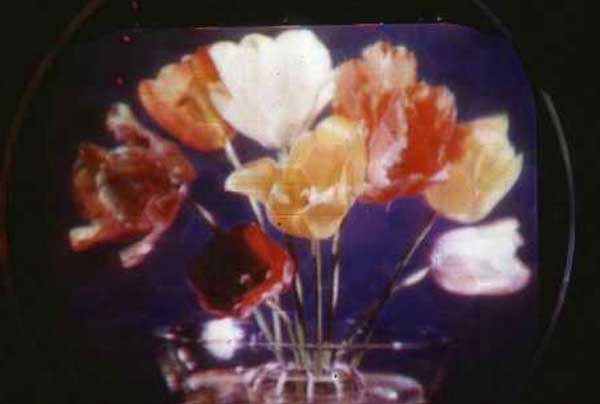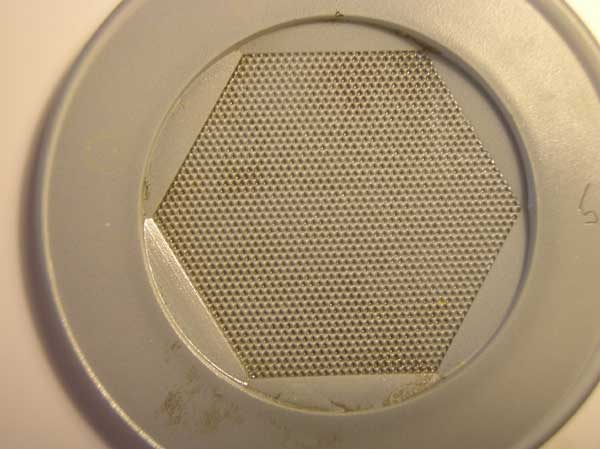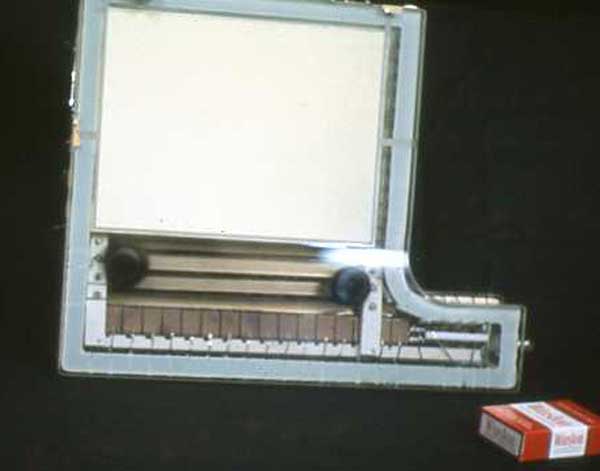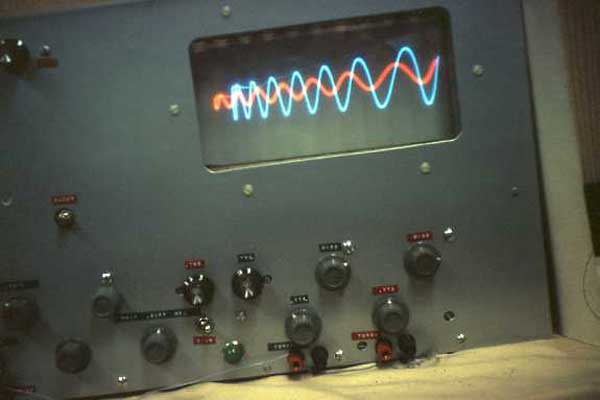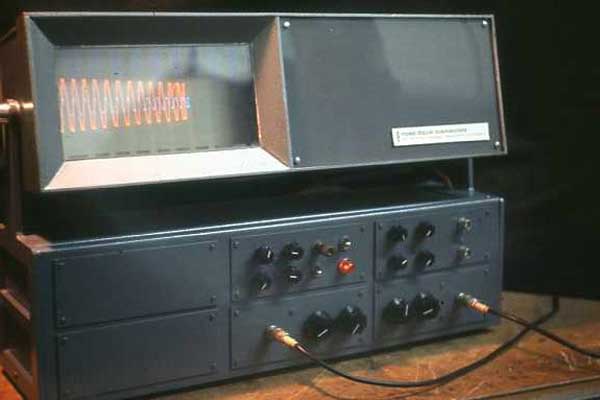Early Color Television Geer Experimental Color CRT
This tube was invented by C. Willard Geer, a professor at the University of Southern California. Here is a description from Richard Diehl of how the tube was made:
Chuck Geer, Willard's son, wrote this and sent us this article:
More from Chuck Geer:
The tube (above) in the Smithsonian is the one built by Stanford Research Institute. As I understand, it is no longer on display, but rather in storage.
The color image above is one of those from this tube
Another screen image on the original Geer tube as developed by SRI. This is the one we got to see on July 24, 1951. I would dearly love to see the images that DuMont got on their surreptitious version of the Geer tube.
This image is that of one of the pieces of glass that has been stamped with rows of tiny pyramids. The glass was cut at the edge of the pyramids to form a hexagon which was phosphored (RGB) and then glued as a substrate to the glass screen of the tube. If you look closely at the color image of the girl, you can see the individual hexagonal pieces of glass. SRI (really Technicolor) invited the whole Geer family up to Palo Alto to view the display. I will never forget it. It was magnificent. But that was it. RCA was locked into its shadow mask. Incidentally. RCA also had the pyramid idea but lost out completely to my dad. If you know anything about RCA, that was unheard of. My dad continued his work on color TV while he continued to teach at USC. He was with Hoffman Electronics for several years and later was a key part of Video Color Corporation (VCC). I remember that while at Hoffman they worked on two color radar displays. It was at VCC that the Geer-Aiken Thin Tube was developed. Ross Aiken had the patents on a thin tube that was combined with my dad's color patents.
This picture appears to be the Geer-Aiken flat (thin) tube. Most of it is based on W. Ross Aiken's patents. He worked with Video Color Corp. on developing his flat tube after working with Kaiser Electronics. The Aiken patents describe the electron gun(s) on the side, the several "U" shaped deflection plates directing the electron beam up at a right angle toward the screen, and then being bent over at another right angle by transparent nesa strips onto the phosphor coated substrate. The Geer part of this tube would be the duplicate hardware on the back with a different phosphor (color) on the back of the substrate screen.
A simple prototype oscilloscope with a Geer-Aiken two color tube. This particular tube had only one bend in each electron beam.
Another simple oscilloscope with a Geer-Aiken two color tube. The electron guns are located off to the right of the screen. As I remember, all the Geer-Aiken tubes made were just two color tubes: 2 electron guns, 2 phosphors (one on each side of the substrate). They could have been any two colors. I remember some with red and green phosphors. The video seemed to be good for showing cheap western films, certainly better than monochrome. There were plans for a three color Geer-Akin tube. It would have 2 guns below and 1 above; all 3 being off to the side. One side of the substrate screen would have been grooved to accommodate 2 phosphors. Since the 2 color tube was so much easier for a small company to make, it was felt that an oscilloscope would be a good/useful application.
|
